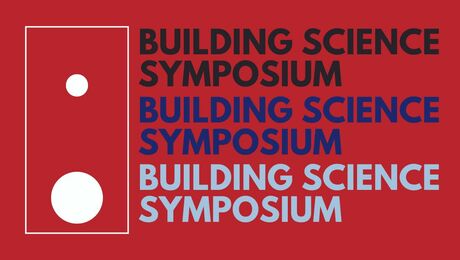Seeking input on wall construction – insulation, sound control.
Hi. First time poster here and appears to be a very knowledgable group. Glad to be able to join.
I would like some input to my project. I am refurbing a home – it is currently stripped down to the studs and I am re-doing all electrical, plumbing, moving interior walls, etc. I am after both energy efficiency and sound reduction as 2 priorities of the property.
The house is typical 2×4 framing. My plans were the following exterior wall construction.
From Outside to Inside:
4×8 Sheets of hardiplank panel with a cedar batten between joints and for appearance – all painted
1×3 furring strip
radiant barrier foil
layer of #15 felt (I bought a large qty at a good price)
4x8x1/2 sheets of quietbrace structural sheathing – this is a temple-inland product which is a sheathing with a felt-like covering – readily available at Lowes or Home Depot
current 2×4 stud wall with roll insulation – R19
4×8 sheets of Extruded polystyrene foam (XPS) also known as blue board – for insulation and also thermal break for 2nd 2×4 wall
construct additional 2×4 wall with roll insulation – R19
1/2″ sheetrock
I would like anyone’s thoughts to better construction – I am open to critique. The house is in north Texas – think hot summers. I am concerned if the walls are “too tight” or any concerns with condensation, etc.
Additionally, the roof is getting metal with radiant barrier, windows are being upgraded – vinyl/doublepaned, floor will receive batt insulation between joists (pier and beam with perimeter wall).
Thanks for any and all input!


















Replies
welcome to Breaktime
There's a guy that's posted here that has background in sound control. Hopefully he sees this post and responds.
Most thoughts on sound deadening incorporate mass. Fibreglass while usefull as an aid offers minimal reduction. You probably are thining more for insulation value of which there are better options if you choose to use them-sip panels, sprayed foam or blown cellulose.
You windows will be your weak link. They will act as vibrating diaphragms. You have limited that somewhat with dble pane-triple would again help, how much..............?
Yet you can dampen the noise transfer with a thermal blanket type of window covering-fine if you don't want the light to come in or don't have anything to look at.
There's a method of limiting sound transmission that those old style rural radio stations used (here in Ohio-the State Patrol did it also, why-beats me, maybe for radio use). Tip the windows on an angle toward the ground, directing the vibration away rather than picking it up straight on. Gasketed split jambs with separated glass is another method-impractical for you.
I'm not familiar with the sheeting you mention-quietbrace. How much is sound control, how much is structural? The hardi gives you a thin solid mass, but the furring allows more resonance between layers. Are you using the furring for fastening ease or do you think it will halp in sound control?
How thick is the radiant barrier foil you mention? Adding felt behind it might be giving you an additonal vapor barrier that you probably don't need. If quietbrace also features a barrier, that's a lotta vapor barrier that might pose a problem.
The separation of walls is good at limiting the sound tramsmission of the framing members. However, having no mass between the two doesn't do anything to stop vibration. A layer or two of drywall between them would do more, then separate the interior framing from that.
R-19? I guess I could have missed the increase in r-value in a 3-1/2" batt., or maybe you were going to let the extra thickness fly between the walls.
A lower slope metal roof will pick up more sound from an airport, steep roof more from traffic, gunfire and dirtbikes.
Best of luck-interesting discussion. What noise are you concerned about?
great reply
thanks greatly for the reply
the thought on the furring strip is that if I have the radiant barrier, it is more effective if it is not sandwiched between 2 materials - I was thinking keeping the outer side with an air space helped prevent thermal transfer. I could be wrong.
the quietbrace info is here. http://www.templeinland.com/BuildingProducts/Fiberboard/QB/qbdefcomply.asp
Temple-Inland QuietBrace is a sound-deadening, structural fiberboard wall sheathing. It is a panel product made from lignocellulosic fibers (wood) and has a density between 10 and 31 pounds per cubic foot. The integral fiber bond is developed by interfelting of the fibers and enhanced with a natural binder, producing the panel's structural performance and integrity. QuietBrace is made from 100% southern pine fiber generated from sawmill residue. The separate asphalt coating on both sides and all edges imparts added strength and water protection. When installed properly, QuietBrace is recognized as a structural wall-bracing panel providing required racking resistance for exterior walls as well as significant noise attenuation properties.
I wanted some sort of structural board plus this supposedly has some sound control characteristics. my interest in sound control is from a 2-lane highway approx. 100 feet from the house.
good comment on the roof - it is a low slope and hip as well, so I believe it is about as good from a design standpoint as possible to not pick up sound. I would expect the metal seamed roof I am going to install is a worse choice soundwise than an asphalt roof but I believe the pros of the metal outweighs the asphalt.
windows - I am planning on going with builder-grade (home depot/lowes stock) - the price really jumps for much better windows. I was thinking the vinyl is a better choice thermally and soundwise vs. aluminum. I am changing the window height from 60" to 48" for windows towards the road - more for aesthetics but that should also help with sound (and energy) - I am also eliminating one window to the kitchen primarily for kitchen layout reasons which should benefit as well. To the road, I will have (3) 36x 48 as one set of windows and (2) 36x48 as another. I have 10 acres behind the house - in it's gutted state, it is tempting to move it another 300 feet back on the property. :) (just kidding).
question - yes,I agree with the additional felt possibly not being needed. Can you have too much vapor barrier in the form of felt? My understanding is that felt does have some breathing and drying capability - the house has ~2foot overhangs so wet walls from rain is minimized but not sure about normal condensation and whether that would work against me enough to be concerned.
yes, I have read more posts since joining here and picking up some great info.....thanks!
Sound Control:
Use foam insulation not fiberglas.
Use QuietRock drywall - http://www.quietrock.com/ at least on the front side of the house (facing the highway)
Use hanging storm windows with laminated glass and edge gasketing at least on the front side of the house (facing the highway). The windows will be your weakest spot so cheaper isn't better.
Do a search here on sound deadening and similar... lots of good info posted.